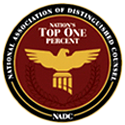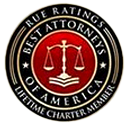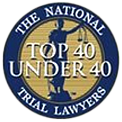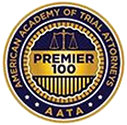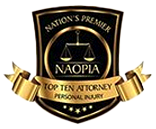When you suffer injuries in a car accident in Philadelphia, filing an insurance claim may not always result in fair compensation. Insurance companies often minimize payouts or deny valid claims entirely. A well-crafted demand letter can serve as a powerful tool to communicate your position and secure the compensation you deserve.
At Gibbons & Crichton, our Philadelphia car accident lawyers help car accident victims draft compelling demand letters that get results.
This comprehensive guide will walk you through the essential components of an effective demand letter and provide you with practical insights into the process.
What Makes an Effective Sample Demand Letter for Car Accident Claims
A sample demand letter for car accident cases serves as your formal request for compensation from the at-fault party’s insurance company. This document goes beyond a simple insurance claim by presenting a detailed legal argument supported by evidence and Pennsylvania state law.
The primary purpose of your demand letter is to establish liability, demonstrate the extent of your damages, and request specific compensation. In Pennsylvania, which follows a modified comparative negligence system under 42 Pa.C.S. § 7102, you can recover damages as long as you are not more than 50% at fault for the accident.
Your demand letter should clearly articulate how the other driver’s negligence caused your injuries and losses. Pennsylvania requires drivers to exercise reasonable care while operating their vehicles, and any breach of this duty that results in harm creates liability for damages.
Essential Components of a Car Accident Demand Letter
Creating an effective car accident demand letter requires careful attention to specific elements that strengthen your case. Each component serves a distinct purpose in building your argument for compensation.
The opening section of your letter should identify all parties involved, including the date, time, and location of the accident. Include the other driver’s insurance policy information and claim number if available. This creates a clear foundation for your demand.
Your liability section must demonstrate how the other driver violated Pennsylvania traffic laws or failed to exercise reasonable care. Common violations include:
- Speeding or reckless driving
- Failure to yield the right of way
- Running red lights or stop signs
- Following too closely
- Distracted or impaired driving
The damages section requires thorough documentation of your injuries, medical treatment, lost wages, and other losses. Pennsylvania allows recovery for both economic and non-economic damages, including pain and suffering, emotional distress, and loss of enjoyment of life.
Your demand should specify the exact amount of compensation you are seeking, broken down by category. This demonstrates that you have carefully calculated your losses and are making a reasonable request based on the evidence.
Pennsylvania Law and Your Demand Letter Rights
Pennsylvania operates under a choice no-fault insurance system, which means you can elect to step outside the no-fault system and retain your right to sue for pain and suffering. This election affects how you approach your demand letter and what damages you can recover.
Under Pennsylvania’s Motor Vehicle Financial Responsibility Law (75 Pa.C.S. § 1701 et seq.), all drivers must carry minimum insurance coverage. This includes $15,000 per person for bodily injury, $30,000 per accident for bodily injury, and $5,000 for property damage. However, these minimum amounts rarely cover the full extent of serious accident damages.
Sample Car Accident Demand Letter Structure
A well-organized car accident demand letter example follows a logical progression that builds your case systematically. The structure should guide the insurance adjuster through your argument while maintaining clarity and persuasiveness.
Begin with a professional header that includes your contact information, the date, and the insurance company’s details. Address the letter to the specific claims adjuster handling your case whenever possible.
Your introduction should briefly state the purpose of your letter and reference the accident date, location, and claim number. Keep this section concise while establishing the context for your demand.
The body of your letter should include these key sections:
- Accident description and liability determination
- Detailed account of injuries and medical treatment
- Documentation of lost wages and other economic losses
- Calculation of pain and suffering damages
- Supporting evidence and documentation
Your conclusion should restate your demand amount and provide a reasonable deadline for response. Typically, 30 days is appropriate, though complex cases may warrant longer timeframes.
Common Mistakes to Avoid in Your Demand Letter
Many accident victims make critical errors that weaken their demand letters and reduce their chances of fair compensation. Avoiding these mistakes can significantly improve your negotiating position.
One frequent error is providing too much information about your injuries or admitting any fault for the accident. Pennsylvania’s comparative negligence system means any admission of fault can reduce your compensation. Stick to facts and avoid speculation about what you could have done differently.
Another common mistake is accepting the first settlement offer without proper negotiation.
Insurance companies typically start with low offers, expecting counteroffers. Your demand letter should reflect the full value of your claim, not a compromise position.
Failing to include adequate documentation undermines your credibility and weakens your position.
Gather all relevant medical records, bills, employment records, and photographic evidence before drafting your letter.
Working with Philadelphia Car Accident Attorneys
While you can draft a demand letter yourself, working with experienced Philadelphia car accident attorneys provides significant advantages. Legal professionals understand Pennsylvania law, insurance company tactics, and effective negotiation strategies.
At Gibbons & Crichton, our car accident attorneys have extensive experience handling car accident cases throughout Philadelphia and the surrounding areas. We know how to present your case in the most favorable light and negotiate effectively with insurance companies.
Our team can help you gather evidence, calculate damages accurately, and draft persuasive demand letters that get results. We handle all communication with insurance companies, protecting you from tactics designed to minimize your compensation.
Professional legal representation also demonstrates to insurance companies that you are serious about your claim and prepared to pursue litigation if necessary. This often leads to more reasonable settlement offers and faster resolution of your case.
Contact Us Today
Contact Gibbons & Crichton today for consultation about your car accident case. Our experienced car accident attorneys will review your situation, explain your legal options, and help you pursue the compensation you deserve.
Call us at 215-274-0173 to schedule your consultation. Let our experienced Philadelphia car accident attorneys handle your demand letter and fight for the justice you deserve.

